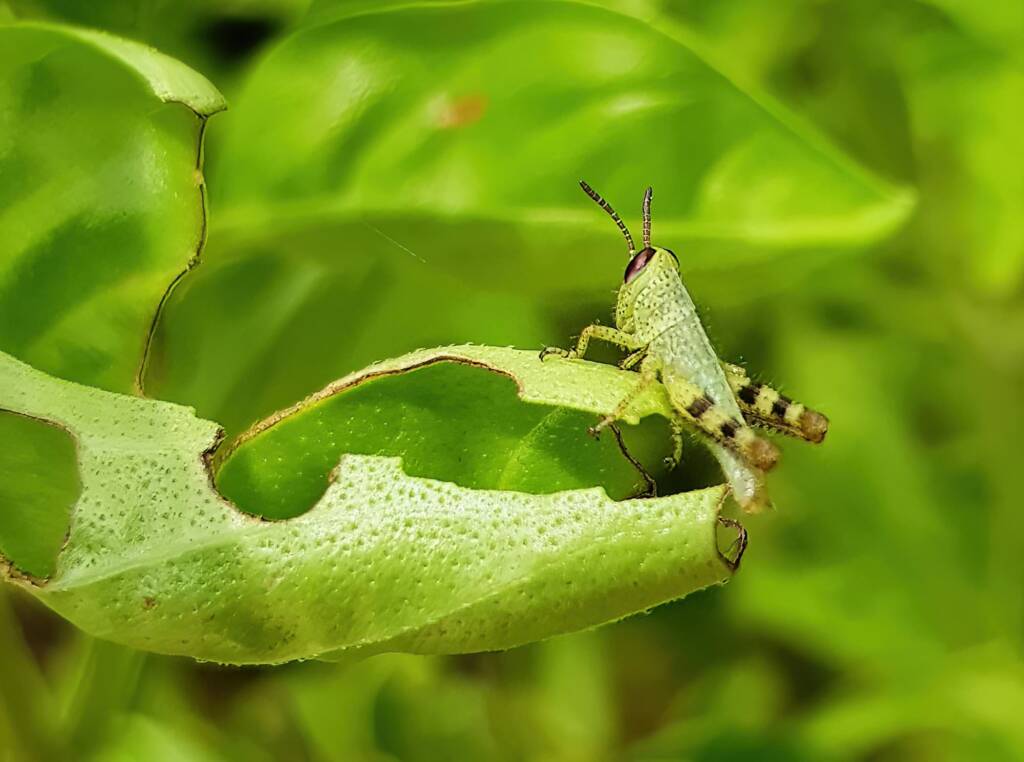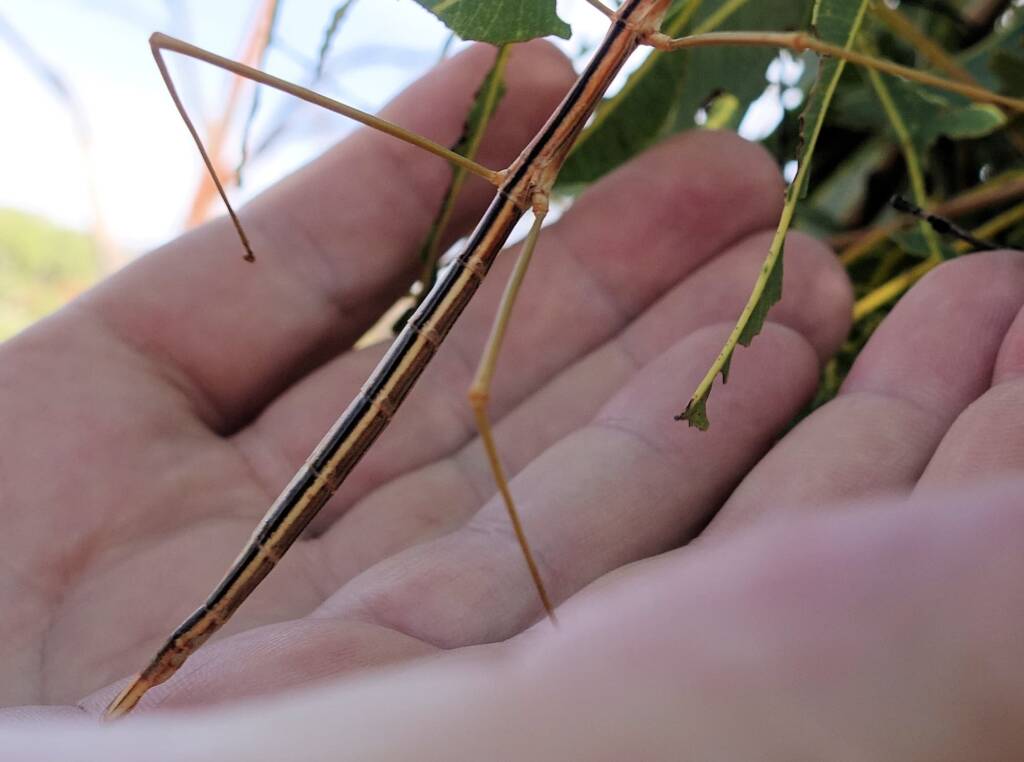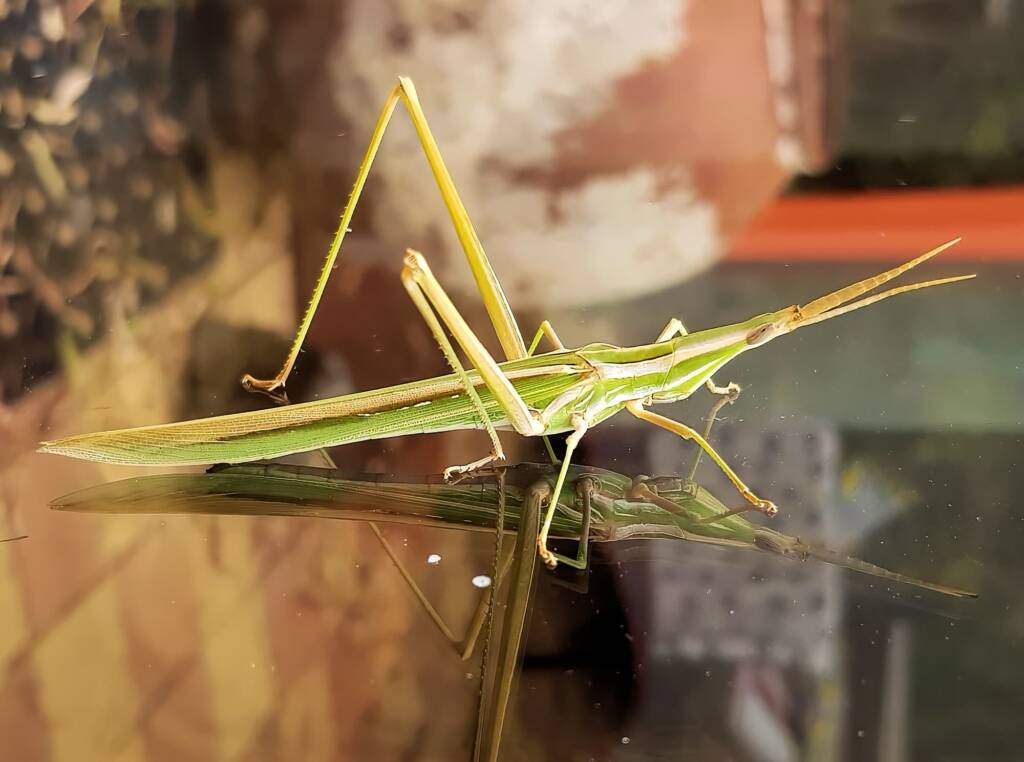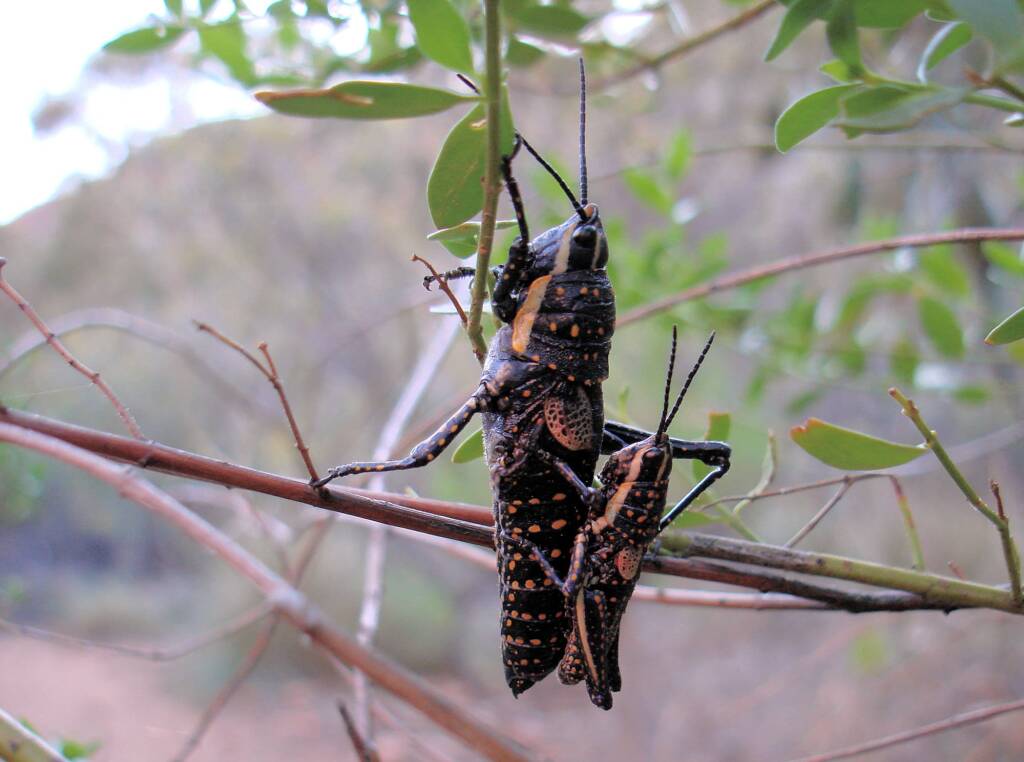OrthopteraGarden Mantis Grasshoppers Blistered Pyrgomorph Giant Grasshopper (Valanga irregularis) Macrotona Queensland Spotted Pyrgomorph (Greyacris profundesulcata)
The order Orthoptera comprise the terrestrial insects (“terrestrial” typically applied to species that live primarily on the ground) that are known by the common names of grasshoppers, katydids, locusts and crickets (as well as related groups without common names).
There are more than 20,000 species worldwide in the order Orthoptera, of which 1,835 described species are found in Australia, although there are thought to be at least 3,000 species here.
Whilst most orthopterans are herbivorous, feeding on a variety of plant material, some species are scavengers and are known to feed on animal and plant debris. Some are predators of other insects; many katydids and crickets tend to be more omnivorous.






Orthoptera are part of a group known as Orthopteroid, that include a varied number of orders including Blattodea (cockroaches and termites), Mantodea (mantises),
Phasmatodea (stick and leaf insects), Embioptera (webspinners), Dermaptera (earwigs), Plecoptera (stoneflies), Zoraptera (angel insects), Notoptera (ice crawlers and gladiators, a non-Australian order)
For more information, checkout out some of the listed sources in the footnote and references.
- Scientific classification
- Kingdom: Animalia
- Phylum: Arthropoda
- Subphylum: Hexapoda
- Class: Insecta
- Informal: Pterygotes
- Order: Orthoptera
- Suborder: Caelifera
- Suborder: Ensifera
- Family: Eumastacidae
Footnote & References
- Orthoptera, Atlas of Living Australia, https://bie.ala.org.au/species/https://biodiversity.org.au/afd/taxa/0192736e-0955-4830-9977-61e07c843b28
- Orthoptera (Grasshoppers & Locusts), What Bug Is That? The Guide To Australian Insect Families, https://anic.csiro.au/insectfamilies/order_overview.aspx?OrderID=24892&PageID=overview
- Phylum Arthropoda-Subphylum Hexapoda-Class Insecta-Order Orthoptera, Key to Australian Freshwater and Terrestrial Invertebrates, https://keys.lucidcentral.org/keys/v3/TFI/start%20key/key/hexapoda%20key/Media/HTML/Orthoptera.html
- Australian Orthopteroids, iNaturalist, https://www.inaturalist.org/projects/australian-orthopteroids
- Orthopteroid, Wikipedia, https://en.wikipedia.org/wiki/Orthopteroid
OrthopteraGarden Mantis Grasshoppers Blistered Pyrgomorph Giant Grasshopper (Valanga irregularis) Macrotona Queensland Spotted Pyrgomorph (Greyacris profundesulcata)
InsectsBees Beetles Blattodea Butterflies Coleoptera Cicada Crabronidae Diptera Dragonflies & Damselflies Formicidae Hemiptera Heteroptera (True Bugs) Mango Planthopper Moths Orthoptera Orthopteroid Processionary Caterpillar Stink Bugs, Shield Bugs and Allies Syrphidae Wasps Water Scorpion (Laccotrephes tristis) Witchetty Grub
